Endless Mountains Health System ER nurse manager Lauren Thomas (above, left) administers the COVID-19 vaccine to Dr. Joseph Speicher, a geriatric medical specialist at EMHS.
Story by Rick Hiduk/Photo above courtesy EMHS
(Also published in the Susquehanna County Independent)
The information delivered during a webinar hosted by Sen. Gene Yaw (PA 23rd) on Jan. 13 made it clear that those charged with distributing and administering the COVID-19 vaccine in rural counties are facing unique challenges. From the logistics of coordinating enough doses and qualified personnel to overcoming anti-vaccine sentiments, state health secretary Dr. Rachel Levine conceded that “Operation Warp Speed” is a misnomer for most rural Pennsylvanians.
Keeping Up With the Feds
One of the biggest challenges at the state level is that the regulations from federal authorities shift daily, slowing distribution and the number of shots going into arms. The biggest changes this past week have been realignments of the phases (or categories) that determine eligibility for the vaccines. As Phase 1A, which was focused on frontline healthcare workers and EMTs, begins to wind down, Levine is cautious about the next step.
“We do anticipate a real rush next week even though we are not getting any more vaccine,” she remarked. Secondly, “The federal government did not allocate enough money to the states for the distribution of the vaccine.”
Phase 1B has been modified to include essential workers and people 75 and older with significant health risks, making it a much larger portion of the population to be vaccinated than was previously anticipated. Phase 1C will include essential workers not included in group 1A or B, pregnant women and citizens 65-75 with significant health risks.
Levine attributes the slow start and awkwardness of the statewide vaccine roll-out to the Christmas and New Years holidays occurring on week days. “We have improved over the last two weeks, and we will continue to improve as this mission continues,” she stated.
Yaw said that most of the callers to his offices are asking when it will be their turn to get the vaccine and if there is a centralized place or website to register for the shots. Not yet, Levine responded. Hospitals are charged with reaching out to everyone in group 1A and EMT offices are working with EMT agencies.
“We are working on a mechanism and a message to reach out to seniors to tell them where they can get the vaccine. We’ll be putting out the message that if you are 65 or older and have a chronic medical issue, it will show where you can go,” Levine stated. “We have no ability to contact Operation Warp Speed to get more vaccine.”
Registration will be done by phone or online, and younger family members of seniors citizens who not internet-savvy are encouraged to assist them. “We are working on a statewide system to schedule and monitor the vaccines.” said Levine, adding that they will be administered by a combination of hospitals and pharmacies.
The federal government selected pharmacy giants CVS and Walgreens to coordinate the distribution of vaccines to senior care facilities, but Yaw noted that those chains don’t even exist in some rural counties, including Susquehanna County where there is only one CVS in Montrose and the closest Walgreens is in New York state. Rite Aid has signaled that all of its locations are staged to administer the COVID 19 vaccine as soon as it is available for pharmacy distribution.
UPMC Susquehanna president Steve Johnson (above) added that the farther one gets from the cities, the more challenging the process is. UPMC has numerous facilities in Lycoming County where the population density is 104 people per square mile but also serves Sullivan County which has just seven people per square mile. “They tend to be older, somewhat less healthy, and less likely to take preventative measures to avoid the coronavirus or to get the vaccine,” said Johnson. “These people tend to be unconvinced of the voracity or the risk of the disease.” Lack of confidence in the CDC and other organizations is hard to overcome.
Yaw said that some of his constituents are also questioning why a 29-year-old grocery cashier would get a shot before an older person in another category. “Store clerks have been found to be especially vulnerable,” Levine responded.
Some Refusing to Get Shots
As frustrating as it is to professionals that the number of vaccines allotted is far from the number of doses that have been administered is the refusal by so many, including frontline workers, to get the shots.
Dr. Cary Funk, director of science and society research for the Pew Research Group related that there is not a lot of data specifically from rural Pennsylvania but that she is seeing pretty common patterns among rural Americans.
“There are people who want to get the vaccine but can’t yet get it, and those who are currently eligible but are reluctant to get it,” she remarked. “Rural Americans were saying that they did not want to be among the first people to get the vaccine.”
“We need an aggressive health campaign to encourage vaccinations,” Johnson stated. “We need resources to educate the people about the disease and the vaccine.” In the Pittsburgh area, for example, 80 percent of those polled said that they will get the vaccine. In rural communities, he noted, that number drops below 50 percent.
Yaw shared concerns with medical professionals on the panel about how elected officials could help to promote the vaccine, citing a balancing act of getting the vaccine publicly as a show of faith or giving the appearance that they are butting in line.
Funk suggested that it is more important right now for public officials to just help get out the word. “We need to have the conversation as to who are the trusted messengers to get people to get the vaccine,” she offered. “The general principal is that they would be the people who share your values. We need a variety of public voices that relate to the values of people in their communities.”
And what about nursing home staff and other frontline workers who have resisted inoculation? “We have had healthcare workers that have refused the vaccine, which is unacceptable,” Levine remarked.
“Because it is new, we have made it voluntary, though we do not make the flu vaccine voluntary,” Johnson said of UPMC vaccine protocol. “PPE is still required. You wouldn’t be able to differentiate walking around our facility who has had the vaccine and who has not.”
Inoculation against the coronavirus is also voluntary at Endless Mountains Health Systems (EMHS) in Montrose.
Johnson elicited a few gasps and snickers from unseen panelists when he said that he is not aware of a single situation of a worker getting COVID from a patient. “More likely to get it from a colleague.”
“People in rural communities did not think that this pandemic was going to be a big deal for them because they were only seeing cities on TV,” Dr. George Garrow (above), chief medical officer for Primary Health Network (PHN). “We began an aggressive campaign for the regular influenza vaccine as the most important flu shot that we were ever going to give. The agreement to get the flu shot was lower than in every other year. I was very disappointed.”
Gaps in infrastructure, including poor internet service, has also hampered the roll-out. So has the lack of deep freeze units needed for the Pfizer vaccine. Most rural counties are getting the Moderna vaccine because it doesn’t have to be kept as cold. “Logistics have become cumbersome for some rural distribution,” Johnson conceded. “The Pfizer product has to be reconstituted and remixed by the pharmacist. This creates an additional cost and puts an additional economic strain on rural facilities.”
Hope and Potential Solutions Discussed
While none of the panel members of the virtual webinar could disagree that the inoculations were not proceeding as quickly as had been hoped, some were more optimistic than others. Garrow and Funk were at odds as to how trusting the public is of the healthcare community but agreed that many people are wary of pharmaceutical companies and politicians. What most of the panelists agreed on was that a multifaceted approach is needed – and the sooner, the better.
“People are generally trusting of the healthcare community,” Funk maintained. “As a whole, they can be an important voice in getting simple information to rural communities as well as simple instructions as to where to go to get the vaccine.” She believes that trust in the vaccine is growing as well. “But we have seen people’s lingering concerns about safety and effectiveness. We have to decide how to convince those people by appealing to their sense of community need, if they don’t see a personal need.”
“We understand that different groups will require different communication plans to get the information out to them,” Darrin Youker added, noting that he is working with ag-related agencies and rural food producers to foster those initiatives.
Youker (above) is a liaison for the Pennsylvania Farm Bureau to The Center of Rural PA of which Dr. Nancy Falvo is the board secretary. Falvo asked a simple question of Levine: “What would get this vaccine out there faster?”
Levine’s simple response: “Money.”
Funds are included in the new federal COVID stimulus bill, she explained, but it has not yet reached the states. “We are going to act as if we have it, but we don’t have it,” Levine explained. “As we open vaccine clinics, we will be using volunteers. But we need qualified people to give vaccines, and we will be contracting with companies. We need money to do that.”
“We have to bear all the costs of storage, the mobile clinic, and internal clinics,” Johnson added. “When we start to take those clinics on the road for 1B and the general public, we will need some significant financial support.”
Garrow feels that PHN, which primarily serves rural communities, has been sufficiently ahead of the curve. “We realized that trust in our communities was going to be crucial in getting them to get the vaccine, so we started reaching out to rural groups in October,” he noted. “I believe that the vaccine has to be accessible. Primary Health Network purchased a mobile unit, and we are ready to take it on the road to rural communities to make sure that those doses get into arms.”
Rep. Eddie Day Pashinski (PA 121st) reiterated the need for a centralized registration plan for the next group of people and voiced concerns about large-scale clinics, mobile or otherwise. “A simple flow chart could simplify things for people waiting for the vaccine,” he suggested. “I don’t want to see seniors standing outside waiting for the vaccine.”
While Geisinger and other large-scale medical providers have developed registration options at their respective websites, there remains no integrated or streamlined process. Family doctors are among those taking name of patients who want the vaccine, Yaw related. “But they are not even sure why they are maintaining the lists or what to do with them.”
“Have the physicians offices who are compiling lists contact their local community health center,” Garrow responded. “We’re not perfect, but we are trying our very best to meet the needs of the community.”
UPMC is experiencing an explosion in requests for vaccinations from all layers of society, Johnson remarked. “We are limited completely right now by how much product we have on hand. The administration has been awkward, but we are getting better,” he stated. “We’ve built the infrastructure for mass vaccinations and we will extend that.”
UPMC is developing a registration program, but Johnson was reticent to provide more details. “This new website will be for all individuals who believe that they are in 1A or 1B to go and register. But we have no idea when it might be your turn,” he explained. “As we gain confidence that it is not going to crash and that it is working well, we will promote it, especially to those new people in 1A.”
Levine is hopeful that the registration bugs will be worked out before Phase 2, which is geared toward the general public. “We don’t know when we will get there – maybe late spring or early summer – hopefully sooner,” she said. “As we push it out to retail pharmacies, they will have a system in place.” Rite Aid is among those pharmacies that have signaled that all of its locations are staged to administer the COVID 19 vaccine as soon as it is available for pharmacy distribution.
Pashinski pressed Levine on the varying paces of vaccine administration from county to county, citing reports last week that facilities in Susquehanna and Lehigh counties had already moved on to Phase 1B.
“I don’t have a moral objection to moving on to the next category,” Levine maintained. “If you don’t have someone with 1A in front of you, give someone the vaccine. Don’t waste it. You don’t have to finish one to start the other.”
“Vaccines don’t save lives. Vaccinations save lives,” Garrow agreed. “There is no cost to the individual for the vaccine. That is covered by the federal government. Many organizations are waiving any copay or impact on the deductible.”
Is Susquehanna County Any Different?
Dr. Levine and Dr. Falvo suggested that much of rural Pennsylvania, if not rural America, is in the same boat. But there are differences from one county to the next as to how the vaccines are received, inventoried, and administered.
In Bradford County, for example, the Planning and Public Safety Department is working with the DOH and PEMA to coordinate vaccinations, even though hospitals and senior care facilities follow their own protocol.
In Susquehanna County, the program is primarily being administrated by the DOH and NEPA Community Healthcare, according to county EMA director Scott Aylesworth. “Once they go to a mass vaccination clinic, we will more than likely be involved with the logistics of that,” he noted.
Loren Stone, chief executive officer of Endless Mountains Health Systems (EMHS) in Montrose, said that 400 vaccines have been received at the hospital and 190 shots given. Since the hospital will need another 190 doses to administer the second shot, Stone shares concerns with other providers about ongoing supply. He does feel, however, that EMHS is nearing the end of Phase 1A.
EMHS, in conjunction with Barnes-Kasson Hospital and NEPA Community Health Care, are working closely with Susquehanna County elected officials to address vaccine issues and begin planning for subsequent phases. EMHS also takes cues from the PA DOH for forthcoming supply and adhering to the agency’s COVID-9 Interim Vaccination Plan for guidance.
“As with any undertaking on a scale this large, there are going to be issues,” Stone offered. “But vaccines are being administered, and that is one of the most important steps in combating this pandemic.” Overall response by medical staff there as been positive, he noted.
EMHS has developed a contact portal on its website www.endlesscare.org for group 1A and a way for others to register on a waiting list for a future vaccinations. The implementation of Phase 1B and C, Stone noted, will depend on vaccine availability and will involve partnering with other providers in the community for larger vaccine clinics.
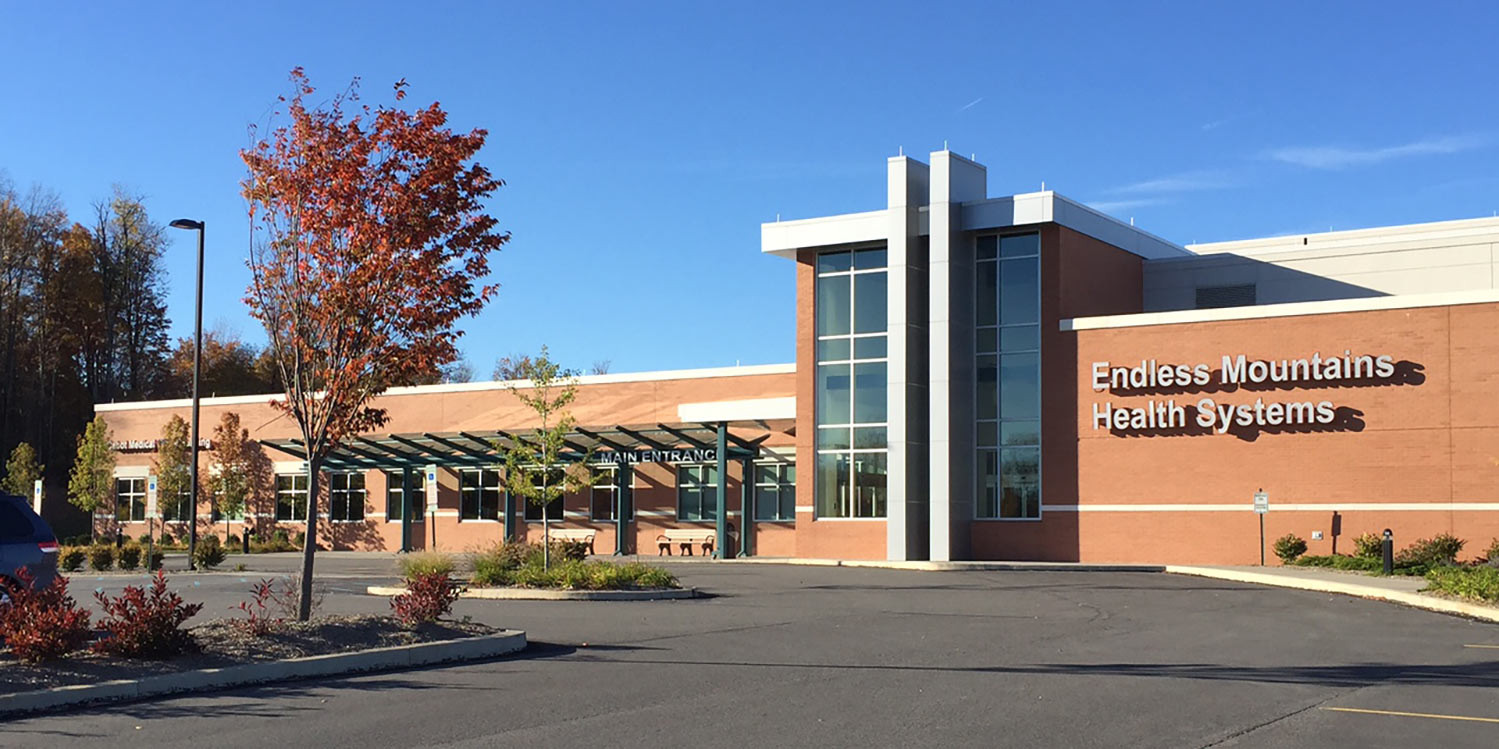
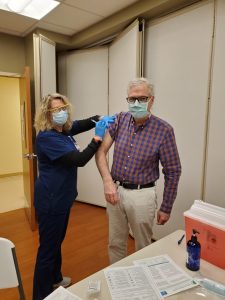
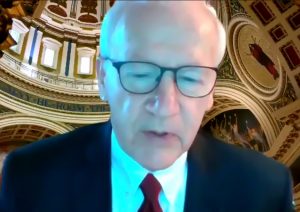
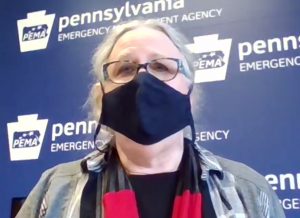
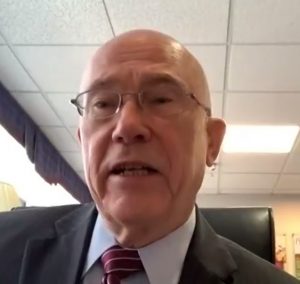
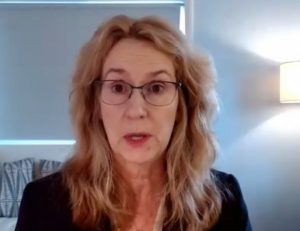
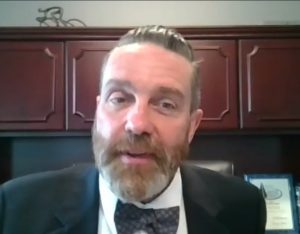
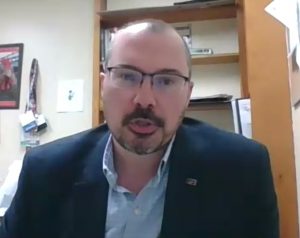
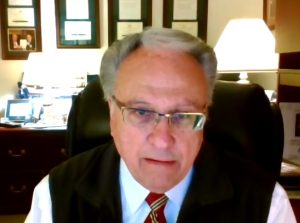
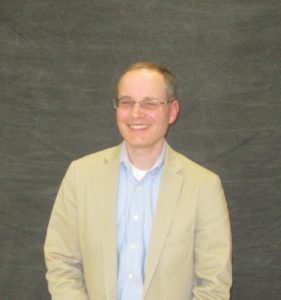
My wiife is 85. I am 84′ trying to get covid vaccination, both have medical problems-not getting any help